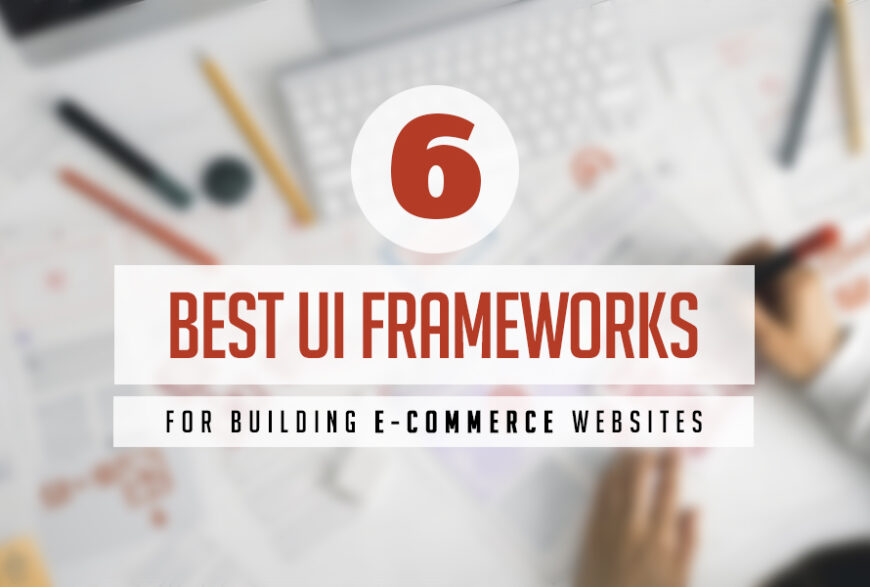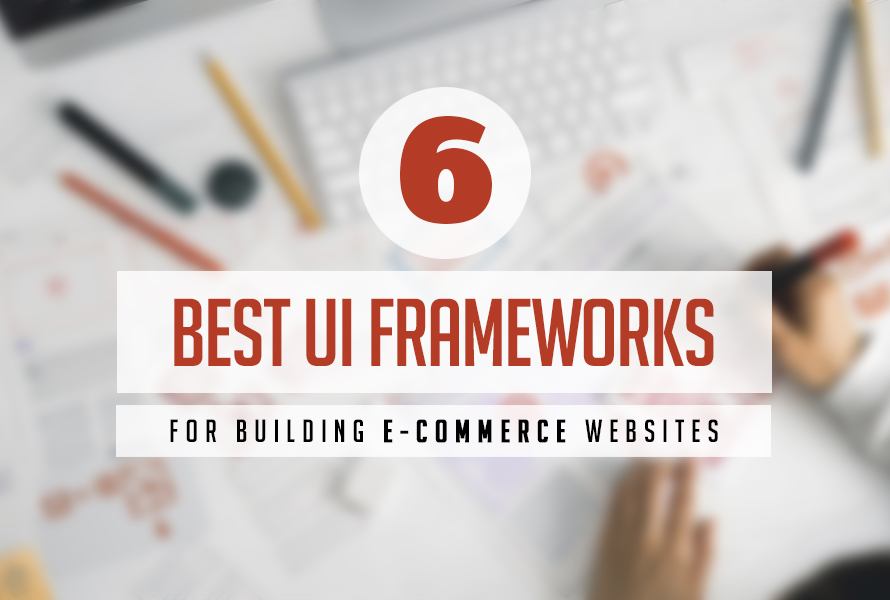Welcome to our blog on crafting outstanding e-commerce websites! Are you looking to choose the best UI framework for your e-commerce website? You have come to the right place today. Picture this: you’re shopping online, and everything just flows seamlessly. Well, that’s thanks to User Interface (UI) frameworks. They’re like the architects behind user-friendly websites. But how do you choose the right UI framework? Keep reading.
In this blog, we’ll break down UI frameworks and why they’re crucial for e-commerce sites. Then, we’ll introduce you to the top six frameworks, including Ext JS (Sencha), Bootstrap, Material-UI, Angular, Backbone.js, and Node.js. We’ll show you how each of these can spruce up your e-commerce site and make shopping a breeze.
Whether you’re a web pro or just starting out, this guide will help you pick the perfect UI framework to boost your e-commerce game. Let’s dive in!
What Are UI Frameworks?
UI frameworks are like handy toolboxes for website makers. They come with pre-made components and styles that make building websites easier. Imagine you’re building a toy house; instead of making each tiny piece from scratch, you get a kit with ready-made walls, windows, and doors. This is how you get a small component library that you use to build a complete website.
For example, Ext JS is a famous UI framework mostly preferred by enterprises. It’s like having a Lego set for websites. You can quickly add things like buttons and menus to your site without starting from zero. Another one is Material-UI, which gives several basic elements of your site a clean and neat look, like how Google designs its stuff.
So, UI frameworks help builders react developers create nice and easy-to-use websites without much trouble.

What Are the Six Most Popular UI Frameworks?
Here are some most popular UI frameworks that can help you achieve beautiful websites.
Ext JS (Sencha)
Ext JS, also known as Sencha Ext JS, is a powerful JavaScript framework that stands out as a comprehensive solution for web application development. It holds particular relevance in the realm of e-commerce website design system development due to its robust features and capabilities.
What sets Ext JS apart from other frameworks is its rich set of UI components, offering developers a treasure trove of pre-built elements like grids, charts, and form controls. These components streamline the creation of visually appealing and highly interactive e-commerce interfaces. Hence ensuring an engaging shopping experience for users.
Ext JS also excels in handling complex data management. Hence making it an ideal choice for e-commerce sites dealing with vast product catalogs and intricate databases. Its data-driven architecture simplifies tasks like data binding, sorting, and filtering, enhancing the site’s responsiveness and user-friendliness.
This framework employs techniques such as Ajax, DHTML, and the Document Object Model (DOM). Ext JS serves as a unified platform for creating both desktop and mobile apps. It operates on the MVC/MVVM (Model-View-Controller and Model-View-ViewModel) architecture. While this architecture is not obligatory, adhering to it is strongly encouraged.
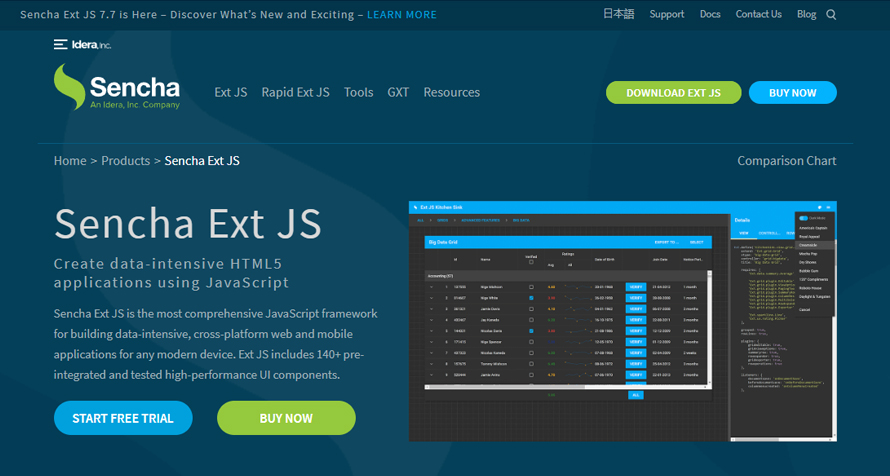
Bootstrap
Bootstrap is a super handy toolkit for making online stores. It’s famous because it can make your store work on all devices, like phones and computers, without you doing extra work. This is thanks to its “responsive grid system,” which automatically arranges stuff neatly.
Imagine you’re building a house, and Bootstrap gives you ready-made walls, doors, and windows. It’s like having a magic box of website parts. This way, you can create your online store faster, and everything looks nice and works smoothly. It happens due to the extensive bootstrap library. So, Bootstrap is like your best friend when you’re making an online shop, making it look great on any device without much trouble.
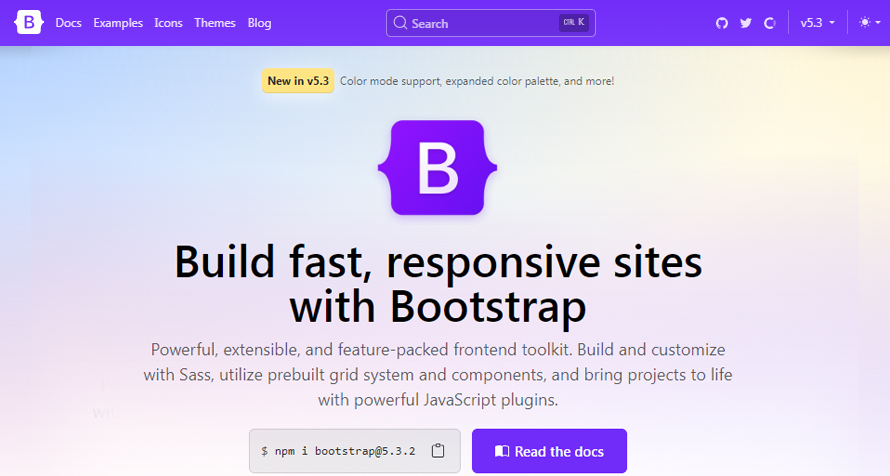
Material-UI
Material-UI is like a fancy, modern design kit for websites. It makes websites look really cool and polished, like a high-end sports car.
One of its superpowers is making it easy for people to find their way around websites, like how you easily control a dashboard in a car.
But the best part? It lets website makers customize things a lot. It’s like getting a suit tailored just for you. You can make your website look and feel exactly how you want it to, which is great for showing off your unique style.
So, Material-UI is like a cool toolkit for making websites look awesome and work smoothly.

Angular
Angular is a fantastic tool for creating e-commerce websites. What sets it apart is its focus on making websites act like apps, known as Progressive Web Apps (PWAs). PWAs are a big deal in online shopping.
Picture this: your e-commerce site loads super fast, even on slow internet connections. That’s what Angular can do for you. And here’s the cool part – customers can add your site to their phone’s home screen, just like a regular app. This makes shopping a breeze, even without an internet connection.
It’s all about building user interfaces and giving shoppers the best experience, which is why Angular’s PWA emphasis is a game-changer for e-commerce websites.
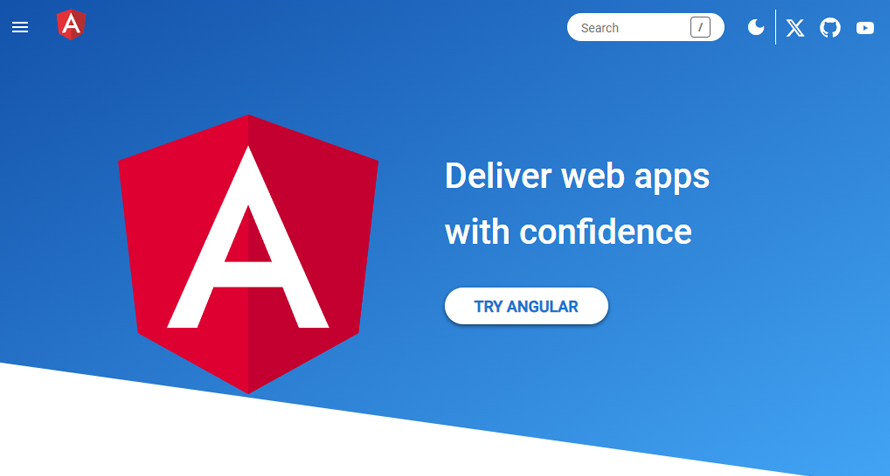
Backbone.js
Backbone.js is like a simple toolkit for organizing JavaScript code. It’s part of a group of tools that help build websites and apps, with a focus on making things neat and organized.
Think of it like sorting your stuff into three categories: what you have (Model), how it looks (View), and how it works (Controller). This makes it easier to keep your project in order and enables developers to make changes without messing up everything else.
Backbone.js is a bit different because it mainly handles what you have and how it looks, kind of like a control center. It’s not a full-fledged framework but a handy tool you can use anywhere you need.
It also comes with something called a “router,” which is great for making fancy single-page apps (websites that feel like regular apps). This is why it’s a good choice for e-commerce sites, as it helps create smooth and interactive shopping experiences.
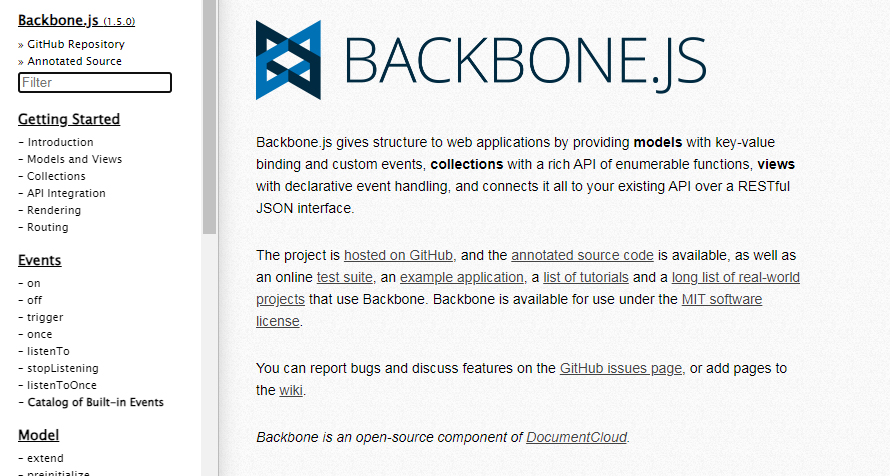
Node.js
Node.js, crafted by Ryan Dahl in 2009 and updated in its latest version, 15.14, in April 2021, is a versatile tool for enabling developers to make web applications that don’t rely on web browsers. Think of it like a Swiss Army knife for web developers.
What makes Node.js great for e-commerce is its ability to handle heavy-duty tasks, like managing lots of data, in a smooth and speedy way. It’s like having a super-efficient factory for online stores.
With Node.js, your e-commerce site can handle lots of customers and transactions without slowing down. So, if you’re looking to create a fast and responsive online shopping experience, Node.js is the way to go.

Conclusion
When it comes to making great e-commerce websites, your choice of development tools really matters a lot. Angular shines with its focus on making websites work like apps, giving customers a smoother experience. Node.js, on the other hand, is like a super-efficient engine for handling lots of data and transactions, making your site fast and reliable.
So, whether you want a user-friendly site with app-like features or a robust system to manage all basic elements of your e-commerce needs, Ext JS, Angular, and Node.js are the go-to options. They’re like the superheroes of the e-commerce world, making your online store better and more efficient.
FAQs
What Is an E-commerce Website?
An e-commerce website is an online platform where businesses sell products.
How Do I Choose the Right UI Framework for My E-commerce Project?
To pick the perfect UI framework for your e-commerce project, consider factors like
- Design
- Functionality
- Scalability
- Developer expertise.
How Can I Optimize My E-commerce Website for Mobile Users?
Optimize your e-commerce site for mobile by ensuring:
- Responsive design
- Fast loading
- Mobile-friendly navigation
- User-friendly checkout processes.
Why Is It Important to Choose the Right UI Framework?
Choosing the right UI framework is vital because it impacts user experience, development efficiency, and long-term scalability of existing projects.

